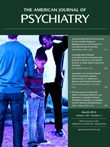This book provides an excellent overview of current scientific knowledge of body-based repetitive behaviors, including epidemiology, psychobiology, nosology, assessment, and available treatment. Grouping the pathologies together based on neurophysiology and brain circuitry rather than on phenomenology is consistent with a recent shift in how other obsessive-compulsive-related disorders are viewed and may help refine research, knowledge, and treatment options for those who suffer from these disorders.
The book also reflects a shift away from viewing body-based repetitive behaviors as marginally fitting current classification (i.e., using not otherwise specified in some cases and, in the worst cases, omitting classification entirely, such as in skin picking and onychophagia) toward viewing them as clinically significant and serious, causing substantial impairment in daily functioning. It is clear from the comprehensive review of the current knowledge of these disorders, as described in the first part of the book, that they are still in the identity forming stage as a group of disorders—that they are not yet well defined with specific characteristics or with well-established diagnostic criteria. As such, throughout the book there is a constant reminder that research on this topic is limited by small sample sizes and lack of replication, as well as by other methodological problems that characterize the short investigation history of this group of disorders. In addition, this identity forming stage is further reflected by the fact that there is no common group name for the disorders discussed in the chapters and that they are still known as body-focused repetitive behaviors, impulse control disorders, habitual stereotypic movement, behavioral additions, or obsessive-compulsive-related disorders.
Other striking epidemiological data presented in later chapters include the incredible ranges in the reported prevalence rates of the disorders (e.g., 0.2%–5.4% for pathological skin picking, 0.5%–3.5% for trichotillomania, and “unknown” for onychophagia). This may represent another important angle regarding the lack of agreed-upon diagnostic criteria, which further complicates the validity of the data for these disorders.
Despite the methodological limitations and the resulting paucity of evidence-based findings, the third section of the book reviews possible treatment options. Indeed, this particular review achieves one of the purposes of the book, as stated in the introduction: “to educate clinicians about body-focused repetitive behaviors” (p. xiii).

